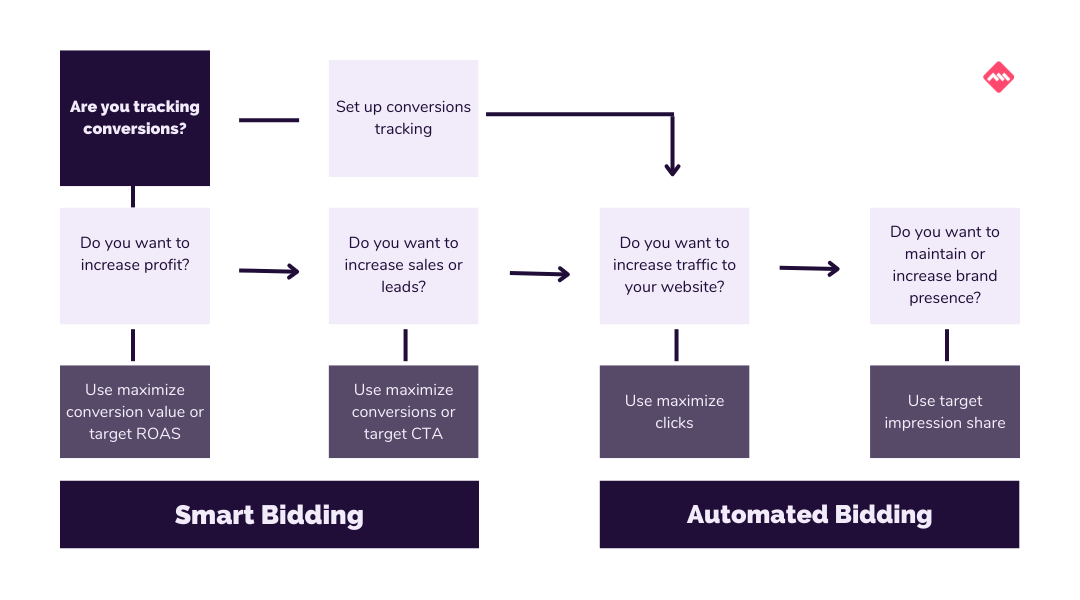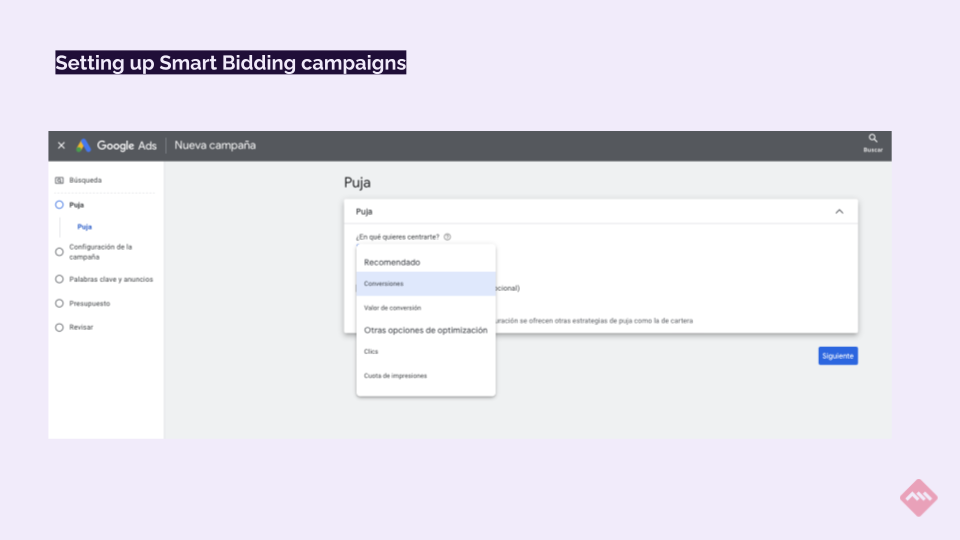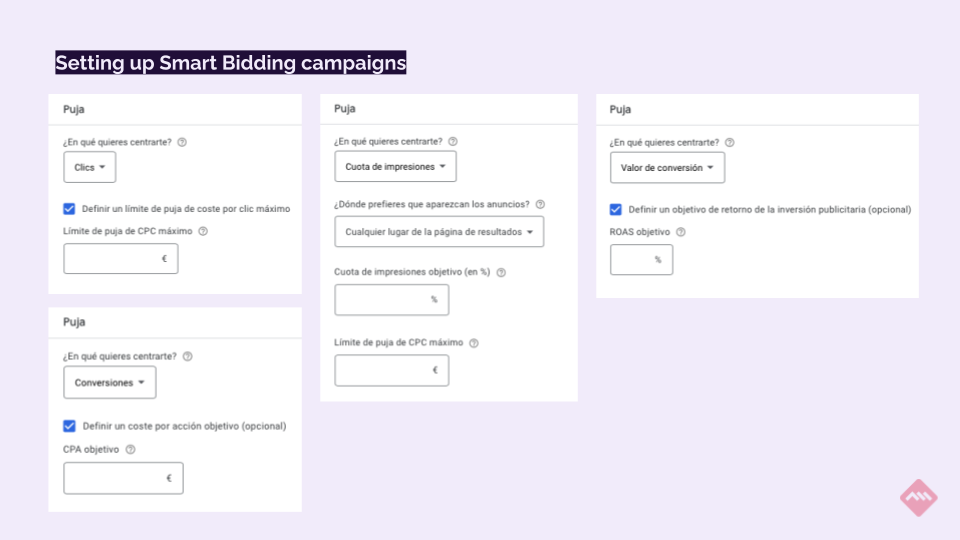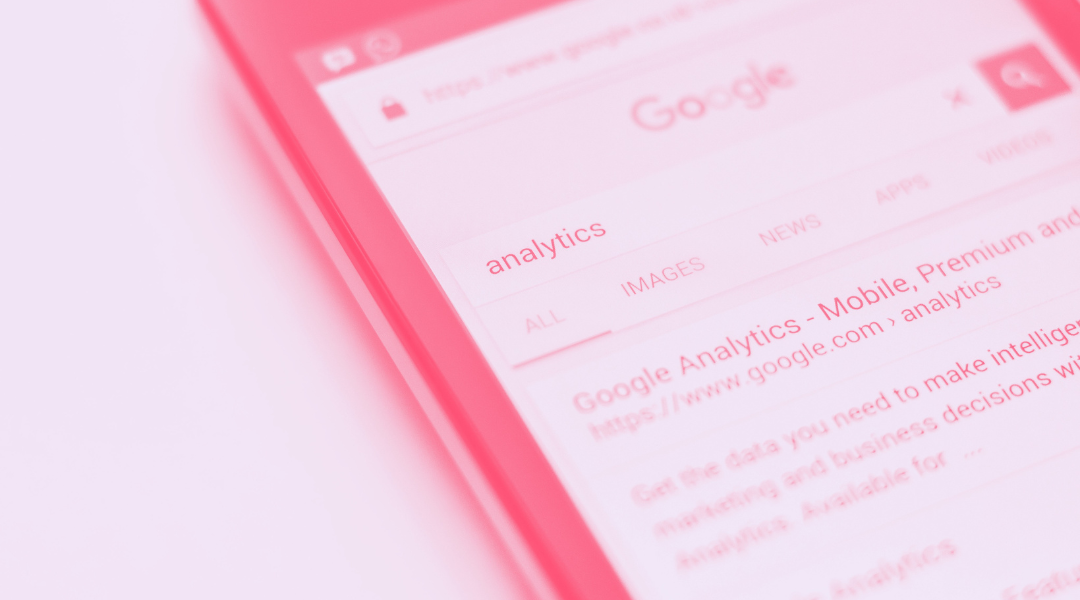How to optimise your campaigns with cart data conversions in Google Ads
In an increasingly competitive advertising environment, the ability to leverage detailed customer data is a key advantage for advertisers. Google Ads...
Plan, activate and control media to hit targets with precision.
Turn data into smart decisions with advanced analytics and modeling.
Efficiency, governance and scale for agencies and teams.
![[Ebook] SEO + AI: eBook to Master AI Overviews and GEO](https://www.adsmurai.com/hubfs/MKT%20-%202025/WEB/Resources%20-%20Banners/HeaderEN_Ebook_SEO+AI.png)
[Ebook] SEO + AI: eBook to Master AI Overviews and GEO
Learn how to structure and distribute your content so generative models can understand it, trust it, and reuse it in their answers. A practical guide to compete and appear in AI Overviews and AI-powered assistants.
Discover more
Today, advertising campaigns require careful management and intelligent approaches to achieve the desired results. In a scenario of accelerated competition, technology stands as a powerful ally for the digital marketer. One of the tools that has revolutionized the online advertising world is Smart Bidding, a set of automatic bidding strategies developed by Google Ads.
Through the use of machine learning and artificial intelligence, these automated bidding strategies not only improve the performance of your campaigns, but also simplify and streamline the management process.
Find out in this article how intelligent automation can take your advertising strategies to the next level, freeing up your time and boosting your results.
TABLE OF CONTENTS
Advantages of implementing Smart Bidding strategies in your campaigns
As we have told you, Google Ads Smart Bidding is a set of automatic bidding strategies that employ machine learning and aim to increase conversions or improve conversion value.
With Smart Bidding, algorithms are in charge of performing the appropriate operations to optimize results and free up time for the person managing the campaign. Through real-time and historical data patterns, the algorithm continuously learns from each user interaction and adjusts bids to achieve maximum performance. In this way, we are able to make better decisions in a smarter and faster way in advertising auctions.
Thus, Smart Bidding offers various bidding strategies that can be tailored to the specific needs of each campaign. Advertisers can choose from strategies such as "Enhanced CPC" to maximize clicks, "Target ROAS" to obtain a specific advertising ROI, or "Target CPA" to reach a desired cost per acquisition. This flexibility allows bids to be adjusted according to campaign objectives and advertiser preferences.
In fact, advertisers can leverage automated bidding strategies to reach their audience across different platforms and devices, thus maximizing the reach of their campaigns. Smart Bidding is not only limited to Google search, but also extends to other formats such as the Display Network, YouTube and mobile apps.
Still, not all of the bidding process is automated. In order for advertisers to continue to have meaningful control over their campaigns, Smart Bidding allows advertisers to set daily budget limits, adjust bidding strategies at any time and get detailed reports on the performance of their ads.
In addition, Smart Bidding allows A/B testing with different bidding strategies to determine which approach works best for each campaign. By analyzing the results of these tests, advertisers can constantly improve their strategies and optimize their advertising spend over time.
Each of these Smart Bidding strategies suits different business needs and can be leveraged to increase the effectiveness of advertising campaigns.
The "Maximize Conversions" bidding strategy is ideal for advertisers looking to get the most conversions possible within a fixed budget or ROI. The main objective is to increase sales or lead generation in an efficient manner. To implement this strategy, it is necessary to establish a target Cost Per Acquisition (CPA), which represents the maximum amount you are willing to pay for each conversion.
The Smart Bidding algorithm, powered by Google's machine learning, analyzes historical and real-time data to adjust bids for each auction. The system prioritizes opportunities for clicks and conversions that have a high probability of meeting or exceeding the set target CPA. This maximizes the efficiency of the advertising spend and results in more conversions at the target cost.
The strategy is designed to capture as many leads as possible and convert them into desired actions, which translates into more conversions for your business. In addition, Smart Bidding adjusts bids in real time to adapt to changes in user behavior and market conditions, ensuring that investments are effective at all times.
The "Target CPA" strategy is aimed at advertisers who want to reduce the cost of their advertising campaigns and, at the same time, increase sales or the number of customers. In this strategy, you must set a specific target CPA, which represents the maximum cost you are willing to pay for each conversion. The Smart Bidding system will focus on maximizing the number of conversions that can be obtained within the defined target CPA.
Google's algorithm constantly analyzes ad performance and makes adjustments to improve bidding efficiency. It always looks for opportunities that have a high probability of generating conversions at the target CPA, avoiding unnecessary expenses and optimizing the available budget.
The strategy allows to control and reduce costs per acquisition, which increases the profitability of advertising campaigns. In addition, advertisers can focus on achieving a specific cost per conversion, which helps them reach their business goals with greater precision.
The "Maximize Conversion Value" strategy focuses on optimizing campaigns to obtain the highest possible conversion value within the budget. Instead of focusing solely on the number of conversions, this strategy takes into account the monetary value of each conversion.
To use this strategy, you need to assign a value to each type of conversion you want to track. This can be useful for assessing the importance of different actions, such as purchases, subscriptions or requests for quotes. The Smart Bidding algorithm analyzes the data and adjusts bids to prioritize the highest-value conversions, thus maximizing overall campaign performance.
By focusing on more valuable conversions, the strategy allows you to increase the value of conversions and ultimately improve your return on advertising spend. In addition, the strategy can be tailored to different types of conversions, prioritizing those that are most important to each business.
The "ROAS Targeting" strategy aims to maximize the return on advertising investment by focusing on achieving as many conversions as possible with a fixed ROAS (Return on Advertising Spend). ROAS represents the value generated for each monetary unit invested in advertising.
To use this strategy, a target ROAS value must be established. The Smart Bidding algorithm will adjust bids to maximize the relationship between the value generated by conversions and the cost of the advertising investment. In this way, it will focus on opportunities that have a high probability of generating conversions with a ROAS equal to or higher than the set target.
The strategy is designed to maximize the efficiency and profitability of your advertising campaigns, generating the highest possible return on investment. On the other hand, the ROAS objective allows you to focus on obtaining a positive return on your advertising investment.
As you may have seen, there is a key difference between Smart Bidding strategies and Google Ads automatic bidding strategies. This is that automatic bidding strategies focus on maximizing clicks or reaching an impression quota, while Smart Bidding strategies use machine learning to optimize bids based on specific business objectives, such as conversions, ROI or conversion value. Thus providing greater personalization and efficiency to obtain accurate and appropriate results for the advertiser's goals.

Now that we have explored the different bidding strategies available in Smart Bidding, it is important to highlight the key advantages offered by this powerful automation tool. By adopting Smart Bidding in your ad campaigns, you can enjoy a number of advantages that will save you time and improve the overall performance of your ads.
The use of machine learning algorithms allows Smart Bidding to process and analyze large amounts of data at an impressive speed. This makes it possible to make more accurate predictions about how different bidding strategies would affect conversions and conversion value. The ability to evaluate multiple factors and patterns in real time far exceeds the capabilities of human calculation, leading to smarter and more effective decision making.
One of the key advantages of Smart Bidding lies in its ability to optimize bids by taking into account a wide variety of contextual signals at the time of the auction. These signals include attributes such as device, location, time of day, language and user behavior. By incorporating this information, Smart Bidding can adjust bids to match the specific preferences and characteristics of each audience, maximizing ad relevance and effectiveness.
Smart Bidding offers flexibility to adapt to each advertiser's individual business objectives. You can define performance objectives, such as target cost per acquisition (CPA) or target return on investment (ROAS), and customize the settings according to your specific goals. This versatility allows you to have precise control over your campaigns and ensure they are aligned with your marketing strategies.
To provide greater visibility into the performance of automated bids, Smart Bidding provides detailed reports that allow you to evaluate the performance of your campaigns. These reports provide valuable information on the behavior and results of bidding strategies, allowing you to identify potential errors or areas for improvement and make informed decisions to optimize your campaigns.
With Smart Bidding, much of the bid management process is automated, which means marketers can free up valuable time to focus on other strategic and creative tasks. Bid automation and real-time optimization enable more efficient campaign management, freeing teams from the burden of manually adjusting bids.
The digital environment is dynamic and can change rapidly. With Smart Bidding, you are in a better position to adapt to changes in user behavior, market trends and competitive conditions. The machine learning algorithm adjusts bids in real time to make sure your ads are in the right position to capture opportunities at the right time.
Smart Bidding represents a comprehensive solution to improve the performance of your Google Ads campaigns. Thanks to its advanced automatic learning, ability to adapt to changing contexts, flexibility in configuration and time savings in management, Smart Bidding becomes an essential ally to maximize ROI and achieve conversion goals more effectively and efficiently.
Incorporating Smart Bidding in your Google Ads campaigns is a simple process that will allow you to take advantage of all the benefits of automatic bidding and machine learning to optimize the performance of your ads. Here are the steps to implement Smart Bidding in your campaigns:
1. Log in to your Google Ads Account
Log in to your Google Ads account and go to the control panel to access your campaign settings.
2. Select Bid Settings
Once in the dashboard, click on the "Settings" or "Campaign Settings" option in the main menu. Next, find and select the "Bid" or "Bid Settings" section.
3. Test Smart Bidding
Within the Bidding section, look for the option to enable Smart Bidding. Usually this option will be labeled "Test Smart Bidding" or "Enable Smart Bidding".
4. Change Bid Type
Once you have clicked on "Test Smart Bidding", you will see the default bid type that has been selected for the campaign. Just below, you will find the option to "Change Bid Type". Click on this option to choose between manual bidding or automatic bidding.
5. Select Automatic Bidding and Targets
To implement Smart Bidding, select the "Automatic Bidding" option. You will then be shown all the available targets that suit your business needs. These targets may include "Maximize Conversions", "CPA Target", "Maximize Conversion Value" and "ROAS Target", among others. Select the objective that best fits your marketing goals.
6. Adjust Additional Settings (Optional)
Once you have selected the Smart Bidding target, you may have the option to adjust additional settings, such as the target cost per acquisition or the desired ROAS value. Be sure to customize these settings to reflect your specific goals.
7. Save Changes and Start Using Smart Bidding
Finally, after configuring Smart Bidding and adjusting the settings according to your needs, click the save changes button. From this moment on, Smart Bidding will be automatically applied to your campaign, and the machine learning algorithm will start optimizing bids in real time to maximize performance and reach your business goals.
Remember that Smart Bidding is a powerful tool that requires time to learn and adjust to your campaign data. It is advisable to allow Smart Bidding to run for a significant period of time so that it can gather data and adjust your bids effectively. Monitor the performance of your campaigns and make adjustments as needed to further optimize results and achieve success in the competitive world of digital marketing.


Implementing Smart Bidding in your Google Ads campaigns is just the first step to get the most out of this powerful automation tool. To get optimal results and maximize the performance of your ads, it is important to follow some best practices.
Set clear objectives
Before implementing Smart Bidding, clearly define your business and marketing objectives. Do you want to increase conversions, improve ROI or maximize conversion value? With clear objectives, you will be able to select the right bidding strategy that aligns with your goals.
Allow time for optimization
Smart Bidding uses machine learning to adapt and optimize bids in real time. However, it's important to give it enough time to gather data and adjust your strategies. Avoid making frequent changes or disabling Smart Bidding prematurely, as this can affect your ability to achieve optimal results.
Segment your campaigns
Consider segmenting your campaigns into groups with similar characteristics and objectives. By grouping ads with related themes or specific audiences, Smart Bidding can better adapt to each segment and optimize bids more precisely.
Use valuable conversions
For Smart Bidding to work effectively, make sure you have correctly set up the conversions that you consider most valuable to your business. This can include sales, contact forms or any other action that represents a relevant goal for your campaign.
Monitor and analyze performance
Regularly track the performance of your campaigns with Smart Bidding. Use reports and key metrics to evaluate the impact of automated bidding strategies on your business objectives. Identify patterns and trends to adjust and improve your campaigns accordingly.
Experiment with bidding strategies
Try different bidding strategies in Smart Bidding. You can test different bid targets to determine which one works best for your needs. Performing A/B tests or controlled experiments will help you discover which approach is most effective in achieving your goals.
Maintain a good account structure
An organized and consistent account structure is critical to the success of your campaigns. Group your ads and keywords logically, and use campaigns and ad groups to reflect different products or themes. A clear structure will allow Smart Bidding to better understand your goals and make precise adjustments.
Optimize landing pages and ads
Smart Bidding's performance can also be influenced by the quality of your landing pages and ads. Make sure your landing pages are relevant and offer a good user experience. Also, create engaging and relevant ads that align with your keywords and goals.
By following these best practices, you can get the most out of Smart Bidding and boost the performance of your Google Ads campaigns. The combination of smart automation and your marketing strategies will allow you to reach your goals more effectively and efficiently.
A smart strategy to take full advantage of Smart Bidding is to combine it with other bidding methods in your Google Ads campaigns. This combination allows you to use the best of both worlds, taking advantage of Smart Bidding's automation and machine learning, while maintaining some manual control in specific areas. Here are some effective ways to combine Smart Bidding with other bidding methods:
Smart Search campaigns with manual strategies
Smart Search campaigns are an excellent option for advertising broad products or services. However, if you have specific products or services that require a more detailed approach, you can keep those campaigns under a manual bidding strategy. This will allow you to have greater control over keywords, bidding settings and targeting for those specific products or services, while the more general campaigns will continue to be managed by Smart Bidding.
Combine Smart Bidding with Manual CPC Bidding
If you have highly relevant, high-performing keywords that you want to highlight, you can use a manual cost-per-click (CPC) strategy for those specific keywords. This will allow you to have more direct control over bidding and ensure that those keywords get the attention they deserve, while the rest of your keywords are still managed by Smart Bidding.
Device targeting with CPA Target Bidding
If you want to segment your campaigns by device, you can use Smart Bidding with a targeted CPA strategy. This way, Smart Bidding will optimize bids for each device (such as desktop, tablet and mobile) based on your target cost per acquisition. This will allow you to have a device-specific approach while maximizing overall campaign performance.
Combine Smart Bidding strategies
Within the same account, you can also combine different Smart Bidding strategies to suit the needs of each campaign or ad group. For example, you can use "Maximize Conversions" for a campaign that seeks to increase visibility, while employing "Target ROAS" for a campaign that has a more ROI-focused approach.
Experiments with bidding strategies
Conduct controlled experiments where you test different bidding strategies with a percentage of your budget and compare the results with the current strategy. This will allow you to evaluate which combinations of bidding strategies offer the best performance and help you make informed decisions on how to optimize your campaigns.
Constant monitoring and adjustments
Regardless of how you combine Smart Bidding with other bidding methods, it is essential to constantly monitor performance and adjust your strategies as needed. Analyze the performance of each strategy and make data-driven changes to maximize the performance of your campaigns.
Combining Smart Bidding with other bidding methods allows you to take full advantage of intelligent automation and machine learning, while maintaining strategic control in specific areas.
Implementing Smart Bidding in your Google Ads campaigns represents a crucial step in taking full advantage of the power of machine learning and intelligent automation. Thanks to this technology, digital marketers can free themselves from the burden of manual bid management and instead focus on creative strategies and informed strategic decision making.
With Smart Bidding, campaigns become more efficient and effective by adjusting bids in real time and optimizing performance to achieve business objectives. The different bidding strategies available, such as Maximize Conversions, Target CPA, Maximize Conversion Value and Target ROAS, offer the flexibility to adapt to the specific needs of each business.
In addition, combining Smart Bidding with other bidding methods and following best practices, such as setting clear objectives, properly segmenting campaigns, analyzing performance and making strategic adjustments, allows for even stronger results and continually improving ROI.

In an increasingly competitive advertising environment, the ability to leverage detailed customer data is a key advantage for advertisers. Google Ads...

Ever launched a Facebook or Instagram campaign, only to see your store flood with customers… but with no way to prove it was thanks to your ads? ...

Google Ads, formerly Google Adwords, allows you to advertise and promote your products and services when users search for relevant keywords. If you...